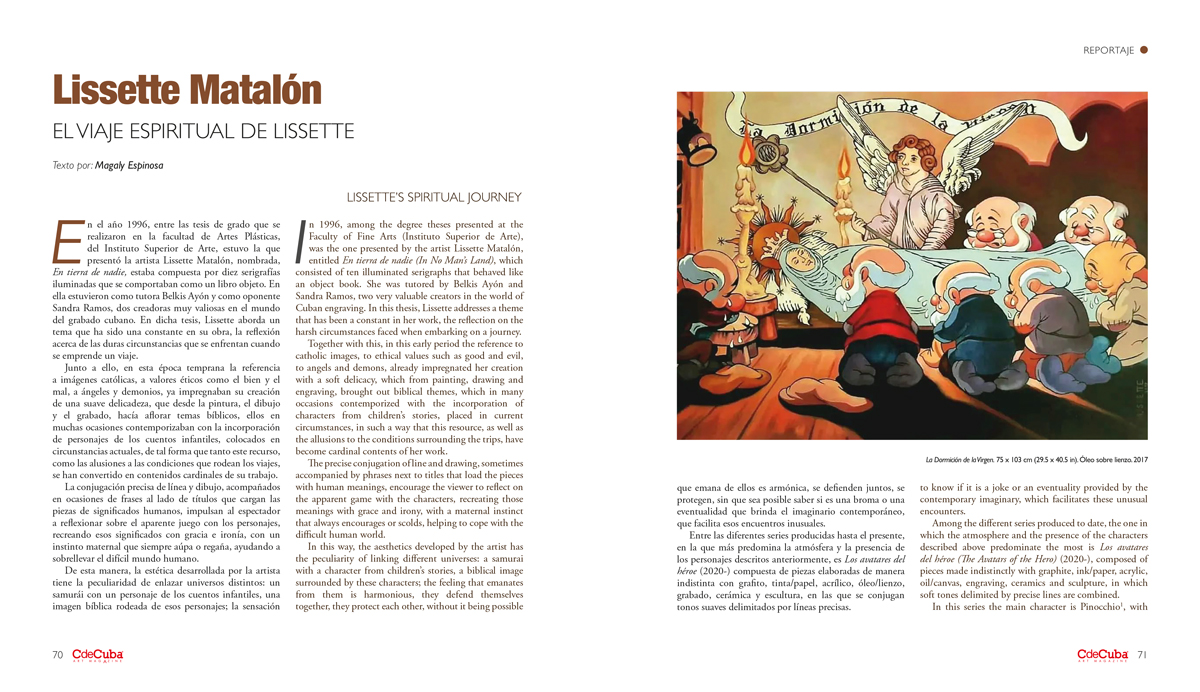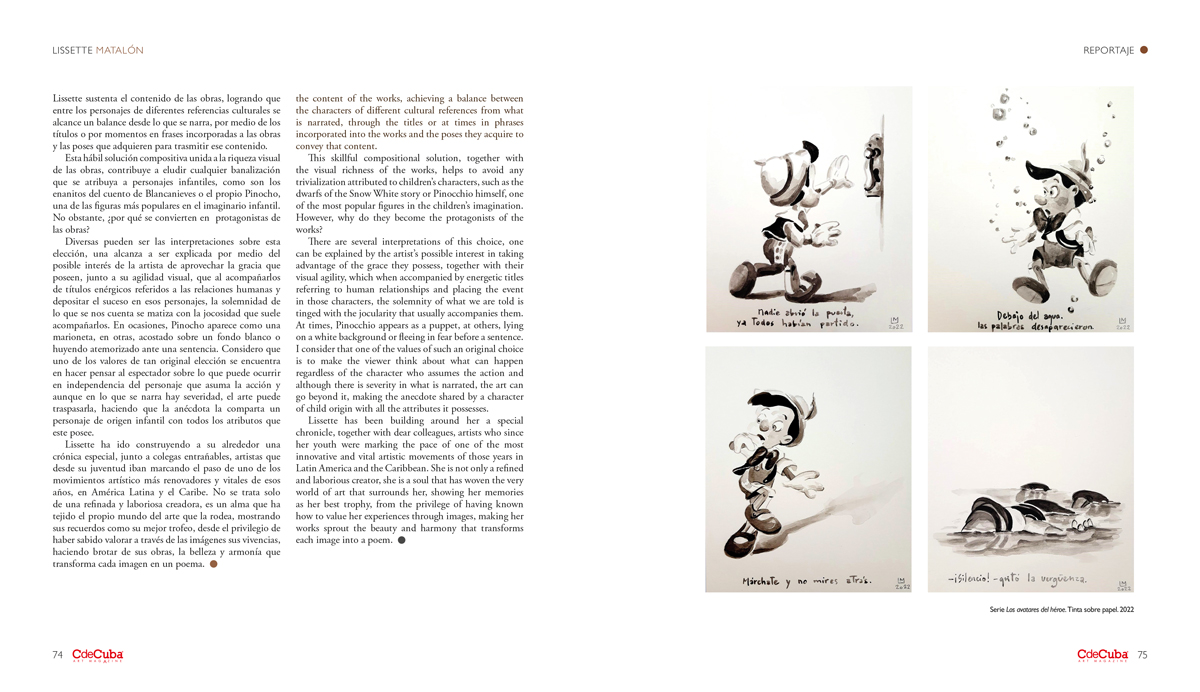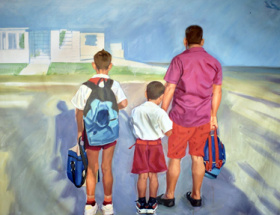Lissette’s Spiritual Journey
By Magaly Espinosa
In 1996, among the thesis projects carried out at the Faculty of Fine Arts of the Higher Institute of Art, there was one presented by the artist Lissette Matalón, titled En tierra de nadie (In No Man’s Land). It was composed of ten illuminated serigraphs that functioned as an artist’s book. As a tutor, Belkis Ayón, and as an opponent, Sandra Ramos, both valuable creators in the world of Cuban printmaking, were involved in this thesis. In this thesis, Lissette addresses a theme that has been a constant in her work, reflecting on the challenging circumstances encountered when embarking on a journey.
Alongside this, during this early period, references to Catholic images, ethical values such as good and evil, angels, and demons, already permeated her creations with a soft delicacy that, through painting, drawing, and printmaking, brought forth biblical themes. These themes often intertwined with the incorporation of characters from children’s stories, placed in current contexts. Both this resource and the allusions to the conditions surrounding journeys have become cardinal content in her work.
The precise combination of line and drawing, occasionally accompanied by phrases next to titles that imbue the pieces with human meanings, compel the viewer to reflect on the apparent play with the characters, recreating those meanings with grace and irony. There is a maternal instinct that either supports or scolds, helping to cope with the difficult human world.
In this way, the aesthetics developed by the artist have the peculiarity of linking different universes: a samurai with a character from children’s stories, a biblical image surrounded by these characters. The sensation that emanates from them is harmonious; they defend and protect each other, making it impossible to determine whether it is a joke or an eventuality offered by contemporary imagination, which facilitates these unusual encounters.
Among the different series produced to date, the one in which the atmosphere and the presence of the previously described characters prevail the most is Los avatares del héroe (The Avatars of the Hero, 2020-). It is composed of pieces created indistinctly with graphite, ink/paper, acrylic, oil/canvas, printmaking, ceramics, and sculpture, where soft tones are delineated by precise lines.
In this series, the main character is Pinocchio1, dressed in his elegant childlike suit. Lissette places her in various scenarios and circumstances, creating a multitude of pieces. Many of the titles of the artworks can be seen as proverbs, advice, or affirmations, carrying a sense of wisdom reminiscent of popular sayings. Pinocchio responds to these titles with gestures and expressions that confirm how he interprets the situations in which the artist places her. In no way are they complacent; instead, they aim to draw our attention to difficult moments that we all may have experienced. Through this way of communicating the content of the works achieves a balance between the characters of different cultural references, narrated through the titles or, at times, in phrases incorporated into the pieces and the poses they acquire to convey that content.
This skillful compositional solution, combined with the visual richness of the artworks, helps to avoid any trivialization associated with childlike characters, such as the dwarfs from the story of Snow White or Pinocchio himself, one of the most popular figures in the children’s imagination. However, why do they become the protagonists of the works?
There are several interpretations of this choice, one can be explained by the artist’s possible interest in taking advantage of the grace they possess, together with their visual agility, which when accompanied by energetic titles referring to human relationships and placing the event in those characters, the solemnity of what we are told is tinged with the jocularity that usually accompanies them. At times, Pinocchio appears as a puppet, at others, lying on a white background or fleeing in fear before a sentence. I consider that one of the values of such an original choice is to make the viewer think about what can happen regardless of the character who assumes the action and although there is severity in what is narrated, the art can go beyond it, making the anecdote shared by a character of child origin with all the attributes it possesses.
Lissette has been building around her a special chronicle, together with dear colleagues, artists who since her youth were marking the pace of one of the most innovative and vital artistic movements of those years in Latin America and the Caribbean. She is not only a refined and laborious creator, she is a soul that has woven the very world of art that surrounds her, showing her memories as her best trophy, from the privilege of having known how to value her experiences through images, making her works sprout the beauty and harmony that transforms each image into a poem.
The artist takes this character from the film version of “Pinocchio” produced by Walt Disney in 1940.






